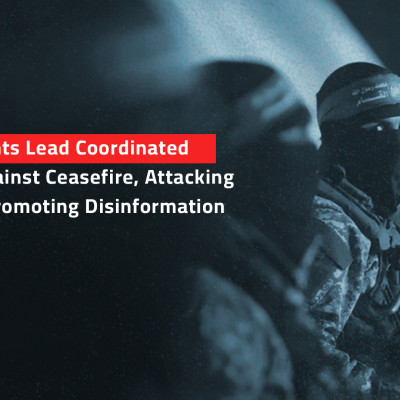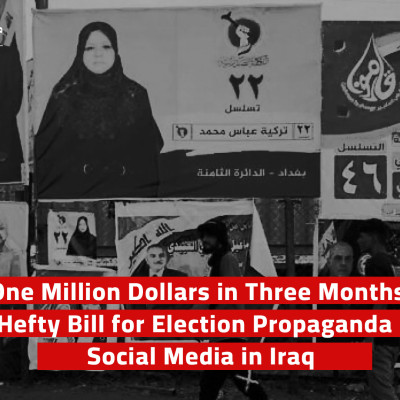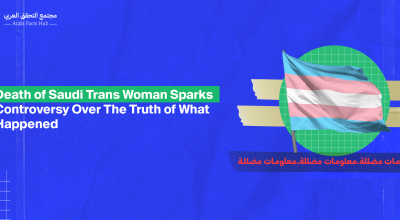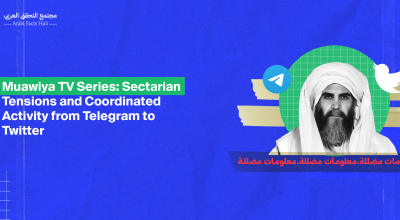How did Al Sadr Supporters Make Use of Twitter Blue
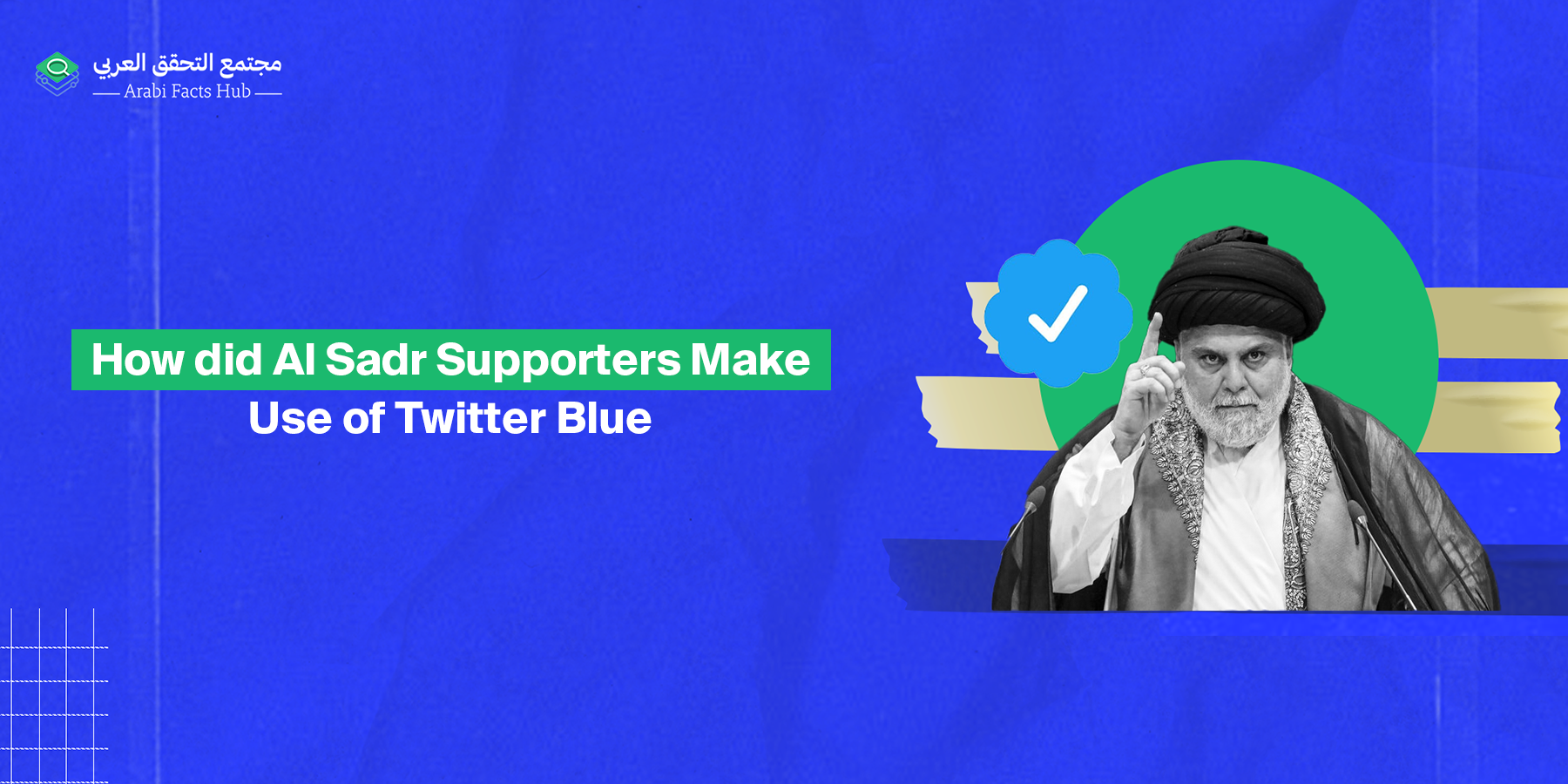
This is part of a series of investigative reports published in collaboration with Daraj media
Supporters of Iraqi Shiite leader, Muqtada Al Sadr, exploit Twitter Blue. These accounts typically participate in electronic promotional campaigns for the Sadri movement, and content that is critical to Al Sadr’s opponents on social media. Arabi Facts Hub has observed this movement by Al Sadr’s followers by monitoring a number of Telegram channels. Our report elaborates on who offers the blue checkmark service, the nature of benefitting accounts and the content they share, as well the dangers of that.
What is Twitter Blue?
In May 2021, Twitter reinstated its verification service which awards the blue checkmark as a means for identifying “original, special, and active” accounts. This came after a suspension of the service for three years following controversy over the meaning of the checkmark in relation to the verification of the account of a white supremacist.
Driven by a desire to increase revenue rather than rely on ads, Twitter gradually released the paid Twitter Blue service, at $2.99/month in exchange for some additional perks, including a trial of company products before official release.
Days after Elon Musk’s takeover of Twitter, the social network launched its renewed Twitter Blue service in November 2022. The service offered the blue checkmark for $8. The service caused quite the damage to celebrities and high-profile companies as it was misused in impersonating entities and public figures. On 12 December, Musk relaunched Twitter Blue after promising mechanisms were put in place to avoid impersonation.
Blue checkmarks for Al Sadr supporters
Obtaining the blue verification checkmark has been important to Twitter users since the emergence of the social network, which has become a vital source of news development and idea sharing around the world.
Arabi Facts Hub noticed frequent messages on one of Al Sadr supporting channels on Telegram, relaying the good news to followers about some of the pro Al Sadr accounts receiving the verification checkmark. This was the “Twitter Calling” channel, which is an electronic meeting point for mobilization of Muqtada Al Sadr supporters, which coordinates and launches social media campaigns in support of the movement. The channel - which has over 25,000 members - says it activated accounts “for those who want to support Mr. Muqtada Al Sadr”. Other services include increasing Twitter followers and supporting accounts through retweeting, as well as reversing account suspensions.
.jpg)
The first announcement of the completion of account verification was on 22 December - only 10 days after Musk announced the return of the service; while the last successful attempt to verify an account was on 11 January 2023.
The “Twitter Calling” channel started with itself, announcing that it has verified its account “which is focused on supporting Mr. Muqtada Al Sadr’s hashtags” through subscribing in the Twitter Blue service. Arabi Facts Hub counted 15 Al Sadr supporting accounts that were given the blue checkmark within 22 days.

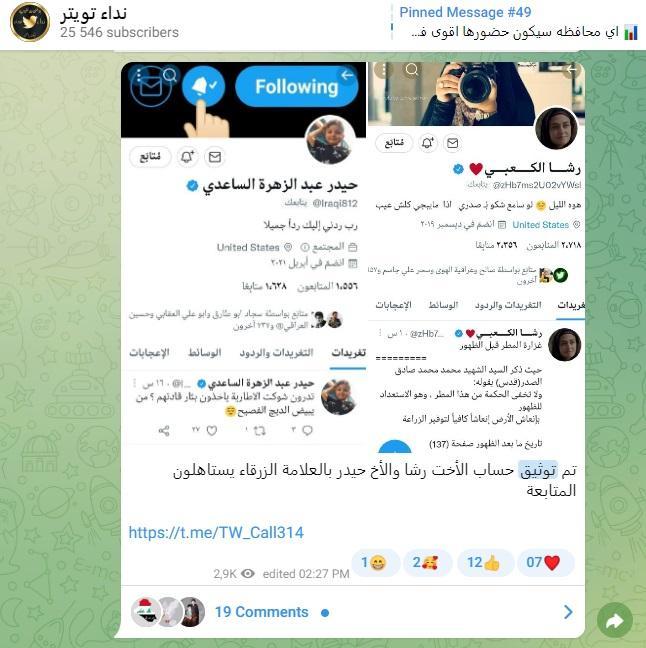
Who are the verified accounts for?
“This account is verified because it is subscribed to Twitter Blue”. This phrase appears when you click the blue checkmark for accounts that are subscribed to the new paid service. The phrase appears on every account that is announced on Al Sadr supporting Telegram channel.

When we took a closer look at the accounts that received the blue checkmark through the “Twitter Calling” channel, we noticed that the holders of these accounts participate in supporting Al Sadr’s movement and in campaigns in his favor on twitter. Some media figures and ex officials were among those account holders, and so were persons who are known for their activity in electronic campaigning for the movement. Of these is Ahmed Al Rabi’i, member of Al Sadr movement and prominent face on TV channels. He too had participated in electronic campaigns in support of the movement.
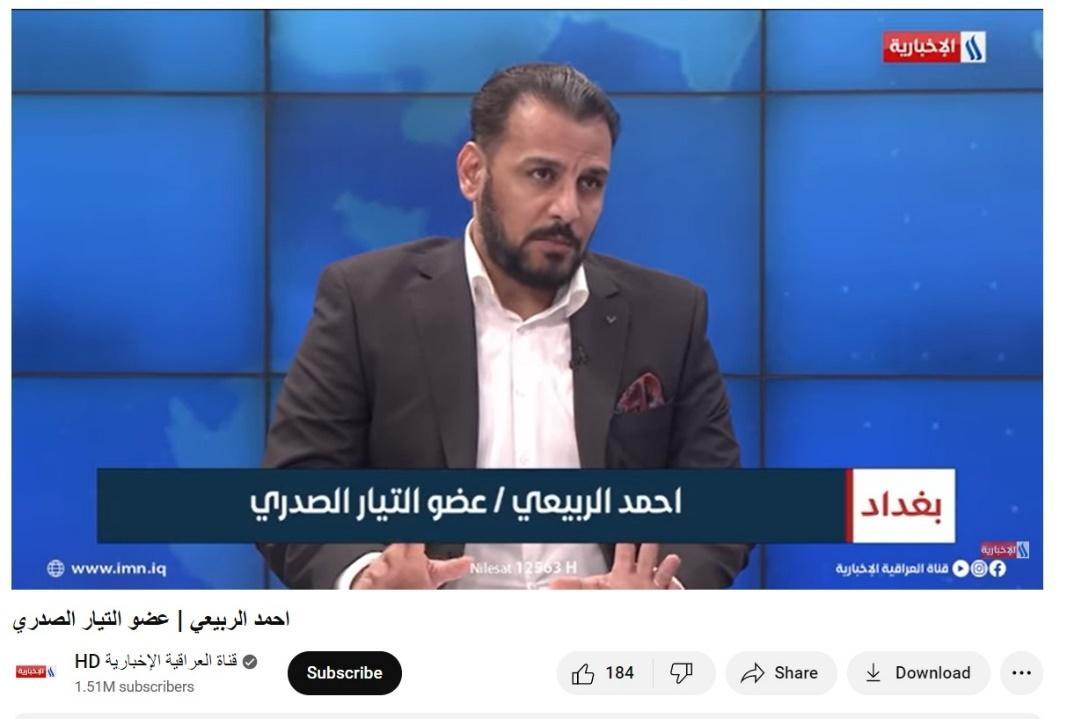
On 10 January, “Twitter Calling” announced that “Ali Al Tamimi’s account has been verified with a blue checkmark, please follow him.” Al Tamimi was a member of parliament who had also held the office of Mayor of Baghdad in 2013.
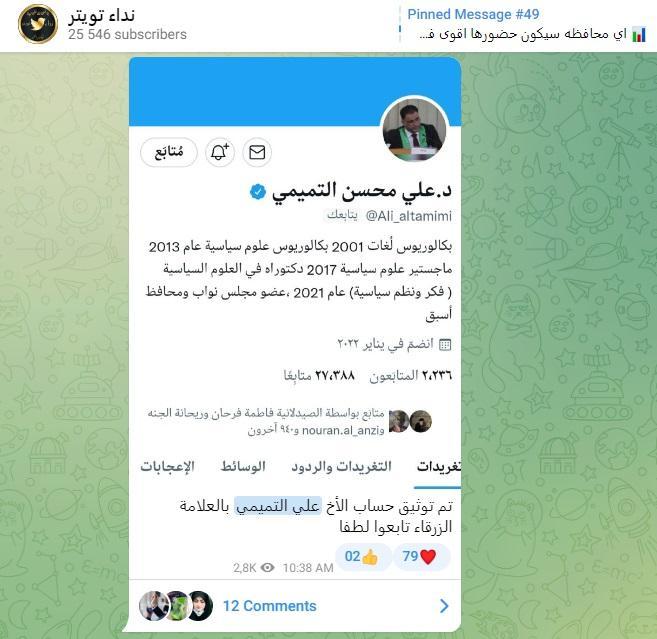
Of the final accounts that Twitter Calling announced as having been verified were those of Eqab Al Bayati, and Sajjad Al Bakri with followers ranging between 2500 to 2700. In addition to having a low number of followers, one of the accounts’ handles is not unique and has no reference to the name. Both accounts have participated in electronic campaigns, including that launched by Muqtada Al Sadr in early December against the LGBTQ+ community. They also participated in the last Sadri campaign using the hashtag “Iraq’s Sadr Will Not Succumb” as part of a response to criticism directed at Muqtada Al Sadr by supporters of Iraqi factions that are backed by Iran, after he made referent to the “Arab Gulf” in one of his statements.

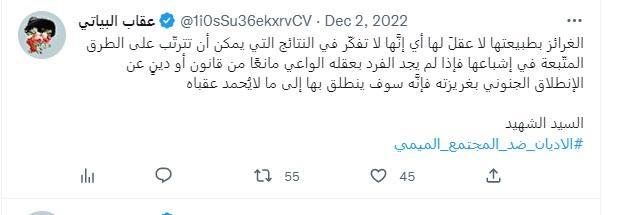
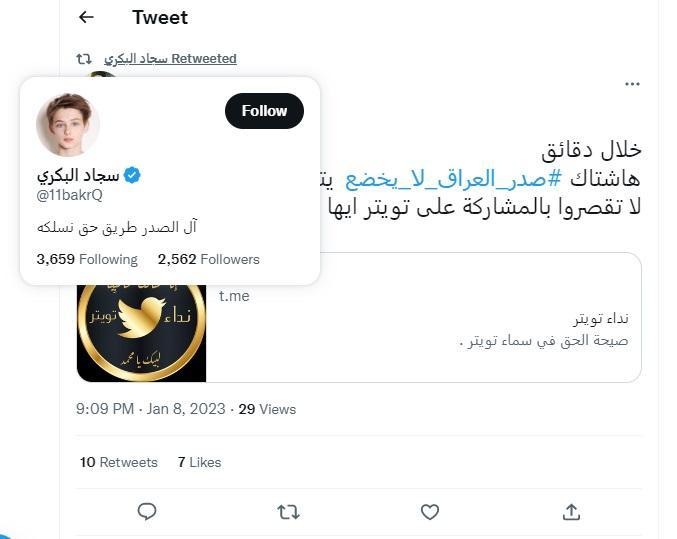
Some of the Sadri accounts with a blue checkmark referred to itself as a “social influencer”, others had their location in the United States. Haidar Al Sa’di that he lives in the United States. He participates in tweeting campaigns that are launched by “Twitter Calling” with an aim of getting these tweets to trend as a most tweeted topic.
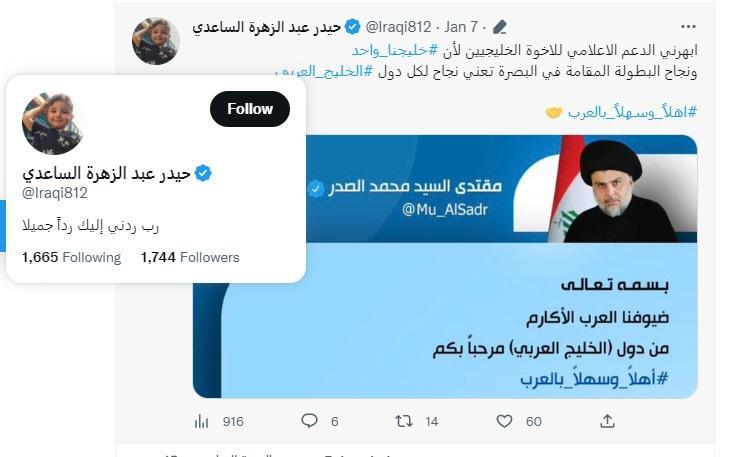
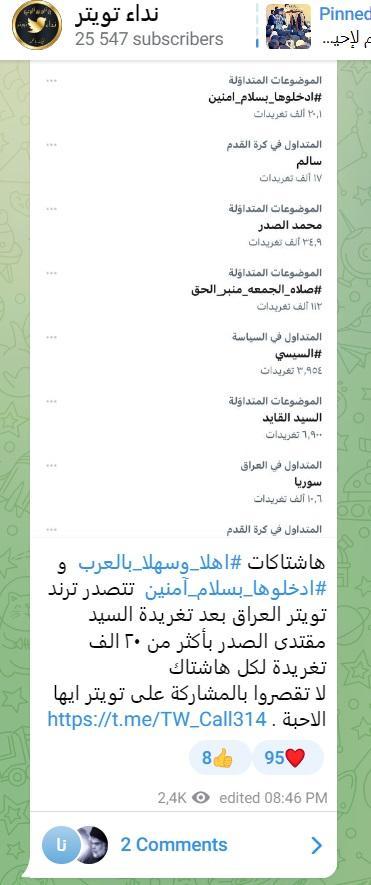
Haidar only has 1744 followers on Twitter, making him one of the smallest Sadri accounts to receive verification in terms of number of followers. Last November, the New York Times published that an analysis conducted by Travis Brown, a programmer in Berlin found that a typical account that received the blue checkmark has around 560 followers. The New York Times stated that Brown conducted his study on over 137 thousand accounts that have subscribed to Twitter Blue for verification between the 10th to the 15th of November. This is a huge number in just 5 days, especially when you consider that until May 2021, the total number of verified accounts on Twitter was 360 thousand, representing 2% of the total number of accounts on the platform.
Previous Campaigns
Iraqi accounts verified through Twitter Blue have participated in campaigns for the Sadri movement, using different hashtags depending on the occasion. Some of these hashtags were purposed to battle with, or get back at, other Iraqi Shiite factions online. Other hashtags focused on social issues, such as the campaign against the LGBTQ+ community, at the backdrop of the controversy surrounding the participation of European national teams in the football World Cup in Qatar 2022 and their defense of LGBT rights.
Some of these hashtags included “your revenge is in the [female] diplomat’s bed”, “the coalition for the state’s prostitution”, “LGBT is the ruin of the family and society, “human instinct rejects the LGBTQ community”, “keep reforming”, “the submission framework is killing the people”, “Morocco is the hope for Arab victory”, “the Framework Government’s neutralization shall not pass”.
Who pays the cost of verification?
In its aforementioned report, the New York Times asked who bears the cost of obtaining the blue checkmark. The report concluded that a large number of accounts are related to the alt-right and those who claim that the [US presidential] elections were rigged, in addition to accounts impersonating public figures and porn accounts.
Every faction in Iraq has their own groups on social media networks that lead coordinated efforts in line with the faction’s goals for online activity. This activity increases at times of conflict between these factions and each faction’s desire to appear to be more popular and have more followers by reaching the trending topics list. Nobody contests the impressions people get when they see the blue checkmark associated with a certain account. The first thing that the blue check translates to is that this is a credible account with influence and status, the content of which can be trusted.
The Al Sadr movement started verifying the accounts of its followers in December 2022, and the effort is ongoing. This is a step towards moving the competition between Iraqi factions to the virtual space, which will push other factions - such as those in support of the Shiite coordination framework - to act similarly. These disputes will no doubt prove very lucrative to Twitter. However, it is becoming an increased burden on fact checkers that threatens the environment of news consumption, and leads to more people falling for misleading information and believing fictitious accounts which present themselves as authentic accounts of public figures.
The next question that comes to mind is who pays for the blue checkmark? The $8 subscription is paid monthly rather than being just a one-off fee.
Is Elon Musk serious about preventing fraud?
When Twitter suspended its paid subscription service after hours of its launch in November 2022, the suspension was related to angry feedback triggered by the emergence of several fake accounts, including one that claimed to be the account of American pharmaceuticals company Eli Lilly, causing the company losses in the amount of 15 billion dollars of its market value, following an announcement by the fake account that the company will be distributing free insulin.
Twitter relaunched the service in December announcing that glitches relating to misrepresentation have been fixed. Twitter’s claim was debunked by Washington Post columnist, Geoffrey Fowler, who experimented with faking an account of Democratic United States Senator Edward J. Markey. Fowler verified the account the first time in November 2022, and entered into a brawl with Elon Musk over the ease by which a fake account can be created. When the service was relaunched, Fowler attempted the same thing from a different account and he succeeded in verifying an account in the name of Senator Markey. In his second attempt, Fowler noted that Twitter added two additional hurdles to make it harder for robots to create fake accounts. He clarified that in order to be verified, he needed to use a Twitter account that was at least 90 days old as newly created accounts can no longer receive verification. For his experiment Fowler borrowed a coworker’s account which hadn’t been used in a long time. He said that “After we changed the name of the account to @SenatorEdMarkey, Twitter made us wait 7 days before we could sign up for Blue.”
The second hurdle according to Fowler was that Twitter required the account to be tied to a phone number before signing up to Twitter Blue. In order to do that, Fowler visited a T-Mobile store and bought a phone number that was valid for one month which cost him $15 - without need for a name or identity. “Once I had all of those pieces in place, I signed up for Twitter Blue on the web, paying with a credit card. At that point, I expected Twitter would ask me to prove my identity, such as uploading a snapshot of a drivers’ license. I thought Twitter might be suspicious that the account was owned by a random Gmail address, not one ending in senate.gov. I assumed its verification system might challenge me after scanning for the word “senator” or maybe even the names of the notable people with legacy verification status.”
He added “But no. After 7 days, a blue check mark appeared on the faux Markey account, no questions asked.”
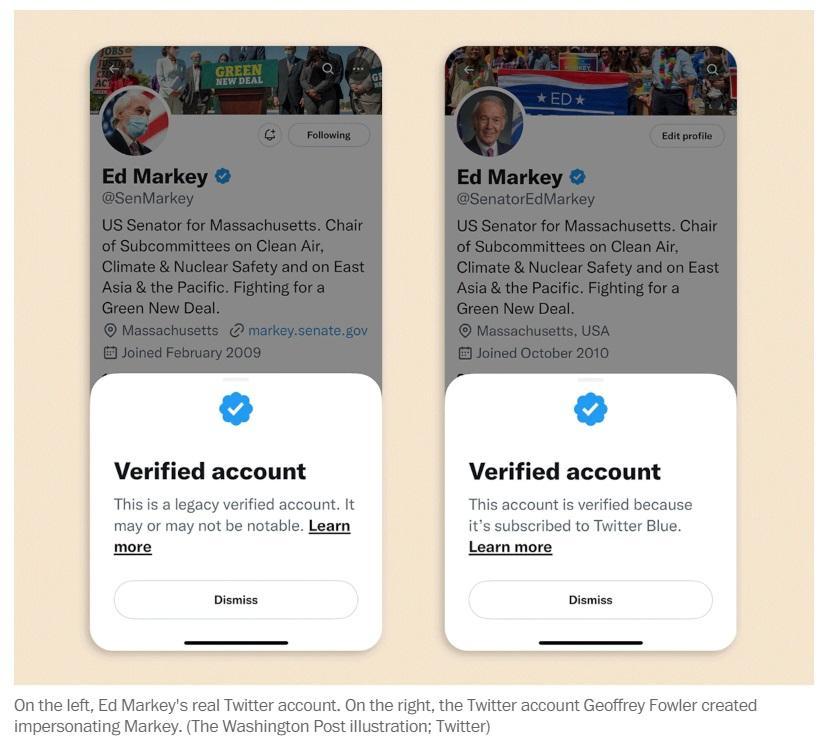
On the left, Ed Markey's real Twitter account. On the right, the Twitter account that was created impersonating Markey.



